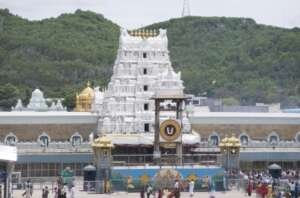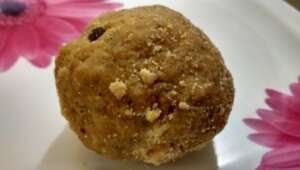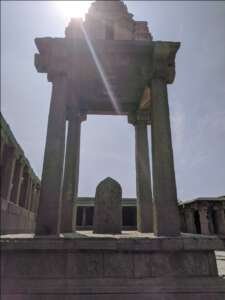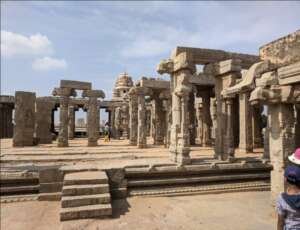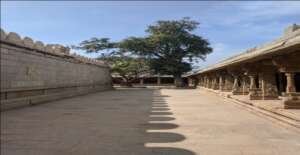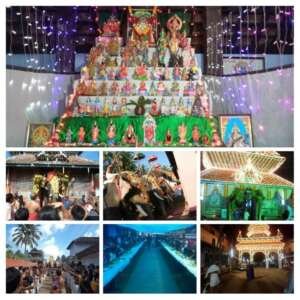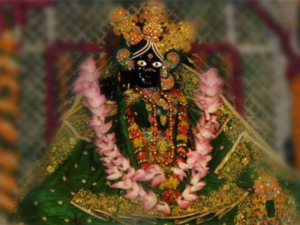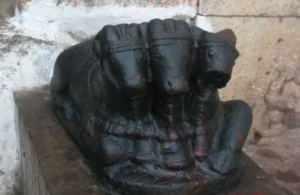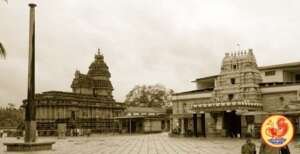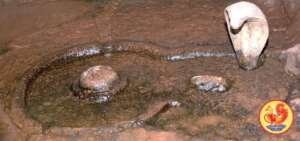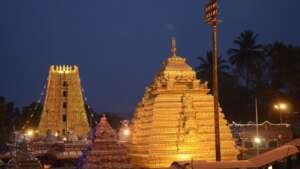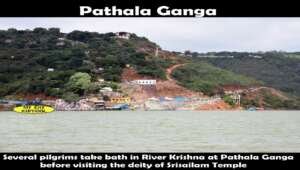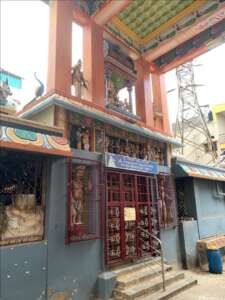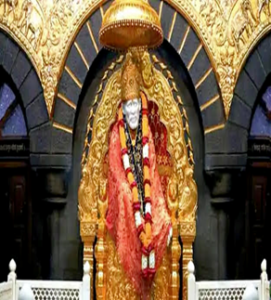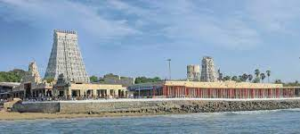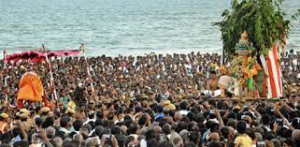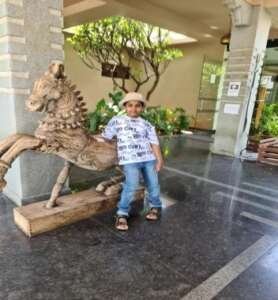Temple Series
Temple Series:
Tirupati Balaji Temple:
What makes the Tirupati Balaji temple different from other temples?
The Tirupati temple is the most famous in India to this day. Located in Andhra Pradesh, it reaches the maximum number of devotees almost every day, with up to 100,000 pilgrims coming in, but on the annual festival Brahmotsavam, up to 500,000 pilgrims can visit.
Why is the temple so popular and important?
The Tirupati temple is important to everyone from a very young age. Many families go there to shave their baby’s hair because according to ancient scriptures, shaving the hair of a child before he or she turns three helps stimulate proper brain development and nerve growth in that baby. This ceremony is known as “mundan”. During the mundan ceremony, the hair shaved is offered to Lord Srinivasa.
However, this is not the only jovial ceremony celebrated here at the Tirupati Balaji temple. There are many important events that the temple hosts throughout the year. For example, Bramhotsavam, which is an event to commemorate an offering made from Lord Bramha to Lord Vishnu. It is celebrated for nine days annually. The temple also celebrates Makar Sankranti, which lasts four days every year and is celebrated with great pomp and great festivity.
The Tirupati temple is not just known for all of these celebrations. During Kali Yuga, Lord Vishnu is known to be residing at the Tirupati temple.
The value of the temple is portrayed through the hard work that people must put in, in order to arrive at the temple itself. For many people in India, taking a trip to Tirupati is very important when visiting temples. Many make pilgrimages in order to arrive. However, that is not the only hurdle one must climb. One must get to the top of the steps of this temple to enjoy the reward and reap the hard work they have sown. In order for the devotees to fulfill their vow to Lord Venkateshwara, they must climb a total of 3,550 steps which adds to a total of 12 kilometers, or around 7.5 miles. There are four temple towers, also known as Gopurams along the way. This journey is taken for religious fulfillment and is done with great effort. Those who manage to climb all 3,550 steps should be commended for their devotion.
The Tirupati temple is also very popular because of its famous prasadams offered, such as the Tirupati laddu. This is a famous treat that is offered to Lord Venkateshwara and is known as “potu” by the temple board. They make around 4,100 small laddus alone in a day. They are so popular, that in order to make sure you do not miss the ordering, the TTD ( Tirumala Tirupati Devasthanams) accepts a payment of 50 rupees (a little less than a U.S dollar) to secure each laddu.
Fun Facts:
Did you know that behind the shrine of Lord Venkateshwara, if one places their ear behind the lord’s back, they can hear sea waves?
Did you know that there is a harmful chemical called green camphor that is known to cause stone erosion, but even though the idol of Lord Venkateshwara is smeared in it constantly, not a single crack or fissure is to be seen?
Did you know that the idol wears real hair offered via the “mundan” process?
Did you know that the ingredients for the worship of the deities such as butter, milk, buttermilk, flowers, and holy leaves, are all sourced from a secretive village with a 22-kilometer distance from the temple?
Ahana, 12 years
Gurukulam- The Shloka Learning Centre
LEPAKSHI TEMPLE:
Samarth Naidu – Gurukulam The Shloka Learning Centre ((Feb 2021)
My visit to Lepakshi temple was fun and interesting. It is situated in Andhra Pradesh and is about a two-hour drive away from Bangalore where I reside.
The temple’s main deity is Veerabadra, the fierce warrior form of Lord Shiva. We first went into the main temple and offered our prayers there. There are many other deities in this temple. Lord Vishnu, Lord Hanuman, and Goddess Badrakali. There is also a very beautifully carved Lord Ganesh. The temple was named after the words uttered by Lord Rama when Garuda fell to the ground after being struck by the demon Ravana.
 Image Courtesy – Google Images
Image Courtesy – Google Images
The temple has many structures including a giant Nandi which holds the title of India’s largest monolithic structure. I was very excited to see this because it was carved out of one giant rock! It was twenty feet high and thirty feet in length. In the main temple hall, there were about seventy magnificent rock pillars, but one pillar stood out the most! This pillar is not touching the ground fully so a piece of paper can easily slide under the pillar! This was my favorite of all the structures in the temple and I wondered as to how the pillar came to be like this. I was told by a local guide that a British marshal tried to push the pillar and level it to the ground but in doing so, many of the other pillars got dislodged.
I looked up and was astounded since the ceiling was painted with beautiful images depicting Sita’s wedding to Lord Rama. Many other paintings about Lord Rama adorned the ceiling. All the paintings were painted with natural dyes made from flowers and vegetables.
After this, we went to see the Shivalingam. The lingam is guarded by a large seven-headed snake that directly faces the Nandi, which is 200 meters away. Our guide told us that the builders of the temple, Virupanna, and Veeranna carved out this magnificent Nag lingam while waiting for their mother to prepare lunch!!
Soon after that, we went to see a huge footprint said to be made by Lord Hanuman. I place my own foot beside the massive footprint and noticed that it was ten times larger than mine.
It was time to leave. I thoroughly enjoyed my trip to this beautiful temple and look forward to visiting it again.
PUTHUCODE – ANNAPOORNESWARI TEMPLE [PALAKKAD – KERALA]
About the temple –
 At the centre of Puthucode is the Annapoorneswari Temple,dedicated to Goddess Annapoorneswari meaning, “Feeding one & all“. The Annapoorneswari Temple is believed to be one of the 108 Durga temples established by Lord Parasurama.
At the centre of Puthucode is the Annapoorneswari Temple,dedicated to Goddess Annapoorneswari meaning, “Feeding one & all“. The Annapoorneswari Temple is believed to be one of the 108 Durga temples established by Lord Parasurama.
The Deity is also known as Santha Durga and is a very powerful Devi bestowing her benevolent blessings to all her devotees. The idol of Devi is almost 4 feet tall with four hands. She is always dressed in a pattu pavadai. To see the Devi in her full chandanakappu afterthe deeparadhana(aarthi) in the evening is at once electrifying. It gives one such joy, peace and realhappiness.
The temple occupies extensive ground. It is difficult to find a temple in Kerala with such large and wide four-squared construction called “Chuttambalam”. It has been built on the principles of Agamasastra.The temple used to be the centre of activity for most villagers.On the four sides of the temple, are streets leading in four directions. Each of them is a village built in the traditional Kerala architecture called “Agraharam” and radiate from the central Annapoorneswari temple.
The daily rituals are held according to traditional Kerala customs. Cherumukku Mana Namboothiri’s hold the right as its head priest. But the daily poojas are done by immigrant Brahmins.
Temple Timings:
Morning: 5.30 am – 10 am
Evening: 4.30 pm – 9 pm
The devotes assemble in the evenings for community recital of Shyamaladandakam and Sahasranamam.
Best time to visit-
One of the most important festivals of the temple is the Navarathri festival in September/October each year. This festival is celebrated by the joint efforts of the villagers with lot of passion. An air of festivity descends on the village for ten days during this time. Most of the original inhabitants of the village return to the village to take part in the festival. Fireworks light up the evening sky through the week. True to Her name there is Annadhanam on all the nine days of Navarathri for all devotees. Puthucode Pulinkari which is served with rice and Olan is unique to this Navarathri sadhya.
Navratri starts off with the Ceremonial “kodiyettam” in the temple.The divine flag of Devi is hoisted in the Golden “Kodimaram” ( Flag mast) on the Mahalya Amavasya day after Sunset.And there it goes, its nine full days’ worth of celebrations due!There are processions with elephants twice a day for the first four days inside the temple around the outer praakaram and on the following four days the procession of elephants with accompanying panchavadyam and chendamelam is taken to the four village on successive days.
The temple decoration is the best during these days and it’s totally worth it even if we get to stand in long,winding queues to get the blissful darshan of the Divine Mother.
Puthucode Navaratri has many lovely and charming legends and faces and one has to be present in person in the midst of all these to truly understand and appreciate the awesomeness of it. So, do make it a point to be there at least once in your lifetime.
Puthucode is a beautiful scenic village off the NH 47. It is midway between Palakkad and Trissur. A major chunk of Puthucode is basically around the Annapoorneswari Temple and the Shiva Temple.
It is approximately 40kms away from both Palghat and Trichur towns. The nearest railway stations are Palghat and Trichur. The nearest airports are Coimbatore and Cochin. The village is located 6 km west of Vadakkencherry on the Palakkad-Thrissur stretch of National Highway 47. There are regular bus services from Trichur and Palghat to Puthucode.
Thank you,
TEJAS SHANKAR
Banke Bihari Mandir
BOLO SHRI BANKE BIHARI LAL KI JAI
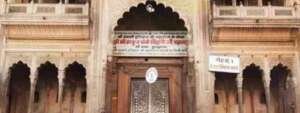 Image courtesy: Temple website
Image courtesy: Temple website
There are 5,000 temples in Mathura and the one I have chosen is called Banke Bihari Mandir.
Location: Vrindavan
Country: India
State: Uttar Pradesh
District: Mathura
Built in: 1864
Style: Rajasthani architecture style
How to reach:
By Road: NH-2, Delhi-Agra road, various buses ply between Delhi and Agree. It is 7 kms from the highway.
By Train: Nearest train station is Vrindavan and Mathura.By Air: Nearest domestic airport is Agra, 67 kms from Mathura.
About the temple
This temple is a Hindu temple dedicated to Lord Krishna. It is also very close to “Nidhivana” The word “Banke” means bent, in three places and the word “Bihari” means “supreme enjoyer”. This is how Krishna who is bent in three places got the name “Banke Bihari”. In the temple the image of Lord Krishna appears in the form of a child and is seen standing in the Tribhanga position.
History
One of the earliest tales say a Rajasthani princess once travelled to Vrindavan to offer prayers to the Lord. She was mesmerized when she set her eyes on the black idol of the Lord and was lost in divine love and worship. But she had to return to the kingdom to perform her duties but always had her thoughts on the Lord. This went on for long time, and finally one day the Lord was drawn towards his devotee’s devotion. The Lord left his seat from the temple and went to the princess. Hence, Pujaris keep closing the curtains and opening in the temple to ward off the evil eye on the God.
Interesting Facts
The image of Lord Krishna in the temple, is the one granted to Swami Haridas by the celestial couple Shayama-Shyam themselves. One interesting fact about this temple is that there are not any bells or conches in the premises, as the Lord does not like the sound of these instruments.Also belief that child Krishna should be woken up gently and not with huge noise. Prayers are performed by peaceful chanting of ‘Radha Naam’. This temple is visited by devotees all year round.
The method of worship at this temple sets it apart from other temples.
It is believed once the temple closes after the evening worship, the Lord visits the nearby Nidhivan silently, plays flute till early hours. Even the gopis visit him and dance to His soulful flute music. Since the Lord is believed to spend longer hours in the evening, the rituals do not include Mangala Arati in the dawn, thereby allowing the Lord to sleep longer. Prayers are performed in three parts every day:
1- Shringar-includes bath, dressing and adornment with jewelry like a crown and necklaces.
2- Raj bhog-feast offered in the forenoon.
3- Shayna sewa means putting the lord to sleep like a baby.
It is also believed Lord Krishna descends into physical form to help His beloved devotees. Also believed one can still hear Lord’s flute whispering Radha Rani’s name and also hear the sound of their anklets in Vrindavan.
Festivals at the temple
Here, the Lord is always in celebration mood and it is believed there are more festivals than number of days in the year. However, major festivals are celebrated in this temple with Akshaya Triteeya, Guru Purnima, HaryaliTeej (Swing festival), Raksha Bandhan, Krishna Janmashtami – only on this day Maha Mangalarti is performed andNandotsav.
Prasad at the temple
Vrindavan Peda Sweet + Tulsi and Chandana + Lord Krishna Photo + Sacred Yantra
Fun Facts
There are lots of monkeys around the temple streets and they always look for people carrying food and wearing spectacles.
Opening Timings: Courtesy temple website
Morning
| Summer Timings (effective 2 days after Holi) |
Winter Timings (effective 2 days after Diwali) |
|
| Opening | 0745 | 0845 |
| Shringar | 0800 | 0900 |
| Rajbhog * | 1100-1130 | 1200-1230 |
| Rajbhog Aarti and closing | 1200 | 1300 |
*No Darshan during bhog
Evening
| Summer Timings (effective 2 days after Holi) |
Winter Timings (effective 2 days after Diwali) |
|
| Opening | 1730 | 1630 |
| Shayan Bhog * | 2030-2100 | 1930-2000 |
| Shayan Aarti and closing | 2130 | 2030 |
By: Abhay, 10 years
Virupaksha Temple is the main center of pilgrimage at Hampi and had been considered the most sacred sanctuary over the centuries. It is intact among the surrounding ruins and is still used in worship. The temple is dedicated to Lord Shiva, known here as Virupaksha/Pampa pathi, as the consort of the local goddess Pampadevi who is associated with the Tungabhadra River.
It was built in the early 7th century but not in the grand form that we see today. Much of it was added between the 14th and 16th centuries, especially during the rule of King Krishna Deva Raya.At present, the main temple consists of a sanctum, three ante chambers, a pillared hall and an open pillared hall. It is decorated with delicately carved pillars.
An Inverted Gopura!
There is a secretive chamber at the back of the temple. There is a small hole in the wall in the chamber. The small hole creates a pinhole effect causing the upsidedown shadow and when this happens at a revered place, a number of theories come up.
The 3-Headed Nandi
There is a three-headed Nandi (a bull that is the carrier of Shiva of the Hindu trinity). Virupaksha is unique because it is the only temple along the length and breadth of India that possesses such an image of Nandi. The exact origins of a Nandi like this are not known but it was probably done to honor all three of Brahma-Vishnu-Shiva.
Emblem of Vijayanagara Kingdom
The next is the emblem of the Vijayanagara Kingdom that is carved inconspicuously into a rock on my right. Varaha (wild boar), the sun, the moon, and a dagger complete it.
HampiBaazar Area
Virupaksha Temple, one of the oldest structures in the area, is located at Hampi Bazaar. It is said that this temple, believed to have been built in the 7th century, was once a humble structure dedicated to Lord Shiva.
Best Time to visit
In December, when the temple celebrates the marriage of its presiding deity to his consort Goddess Pampa, it draws thousands of devotees. Another popular time to visit the temple is February when the annual chariot festival is celebrated.
Places of interest in Hampi:-
- Sri Virupaksha Temple
- Vijaya Vittala Temple – Stone Chariot
- Hemakuta Hill Temple Complex
- Hanuman Temple
- Sasivekalu Ganesh Temple
- Lakshmi Narsimha Temple
- Queen’s Bath
- Riverside Ruins
- Archeological Museum
- Matanga Hills
- Daroji Bear Sanctuary
- Tungabhadra Gardens and Dam
Hope you enjoyed it!!
By:- Unnathi. V
SRI SRINGERI SHARADA PEETHAM
There are over 40 temples in Sringeri and here we will be detailing the most famous temple, Sri Sharadamba Temple. Sri Sharadamba Temple is a Hindu temple dedicated to thegoddess Saraswati in the holy town of Sringeri in Karnataka, India.
Source for Image: www.sringeri.net
The Sharadamba Temple at Sringeri is an 8thcentury temple, founded by Sri Adi Shankaracharya. Until the Vijayanayagara rules and Sri Vidyaranya (the 12th Jagadguru) installed a seated gold statue of Sri Shardamba in the 14th century, this temple housed a sandalwood statue of Shardamba in a standing posture, which was installed by Adi Shankaracharya.
A contemporary painting depicting the temple in the earlier centuries.
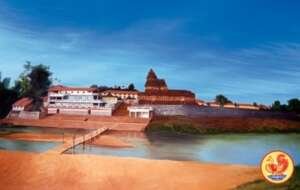 Source for Image: www.sringeri.net
Source for Image: www.sringeri.net
HISTORY
Tradition has it that the Acharya was on the look-out for a convenient and holy place where he could establish an institution to spread the truths of Advaita Vedanta. When the Acharya came to Sringeri, he saw an unusual sight on the banks of the Tunga. A cobra was seen spreading out its hood over a frog in labour pains, to give it shadow from the scorching mid-day sun. Struck with the sanctity of the place, which could infuse love between natural adversaries, the Acharya chose this very location to establish his first Math.
To commemorate this incident, a sculpture known as KAPPE SHANKARA was built on the footsteps to the river Tunga. This was the first place where Acharya is believed to have established one of the four major mutts. As per Hindu legend, the place is associated with sage Rishyasringa, son of Vibhandakamuni. He did severe penance at this place, leading to the name Sringeri. The temple was renovated during the regime of Vijayanagara Empire during the 14-16th centuries and later during 1916
Sculpture of a Cobra sheltering a Pregnant Frog
Source for Image: www.sringeri.net
The Shringeri Sharada Suprabhatha was adopted by the Shringerimatha in the late 1970s by Jagadguru Sri AbhinavaVidyatirthaswamiji.
It is believed that Lord Shiva gifted the crystal Chandramouleeshwara Linga to Sri Adi Shankaracharya. The Linga can still be visited and the Chandramouleeshwara Pooja is performed for the Linga every Friday night at 8:30 PM. It is believed that Goddess Sharadambika is the incarnation of Goddess Saraswati, who came to Earth as Ubhaya Bharathi.
HOW TO GET THERE?
| From | Kilometers | Modes | Approxtimeby Bus |
| Bangalore | 360 | Bus, Mini-bus, Private car, Taxi | 8 |
| Mysore | 260 | Bus, Private car, Taxi | 7 |
| Mangalore | 110 | Bus, Private car, Taxi | 4 |
| Udipi | 80 | Mini-bus, Private car, Taxi | 2½ |
| Shimoga | 105 | Bus, Mini-bus, Private car, Taxi | 3 |
| Hassan | 160 | bus, Private car, Taxi | 4 |
| Chickmagalore | 100 | Bus, Private car, Taxi | 3 |
| Dharmasthala | 110 | Bus, Private car, Taxi | 4 |
| Kollur | 110 | Bus, Private car, Taxi | 4 |
| Koppa | 30 | Bus, Private car, Taxi | 1 |
Nearest Railway Stations:Shimoga, Udipi, Mangalore, Bangalore
Do not miss out on visiting the banks of Tunga River while you are there. Fishing is not allowed in the river at the shrine, but you canwatch the fishes in the River. Visitors can also feed these fishes and watch them jumping to catch the food.
WHERE TO STAY?
The below guest houses are provided to the pilgrims and devotees not on commercial basis but for their comfort. Hence a minimum Kannikai is collected from the devotees for the usage of the above guest houses in order to maintain the electrical and other amenities.
- Sri Shankara Kripa
- Sri Sharada Kripa
- YatriNivas
- Sri Bharathi Tirtha Vihara
- Sri ShankaraSadana
- Sri Srinivasa Kripa constructed by T.T.D
- Sri Bharati Tirtha Krupa
ANNADANA:
To cater the need of devotees a big dining hall namely ‘Sri Bharathi Theertha Prasada’ has been built near Sri Sharada Temple, Sringeri and Nitya Annadana is served to the all devotees in the afternoon and night between 12.15 P.M to 2.30 P.M and 7.15 P.M to 8.30 P.M respectively.
TEMPLE DARSHAN TIMINGS:
SriSharadamba Temple
6:00 A.M. to 2:00 P.M
4:00 P.M. to 9:00 P.M.
Sri Vidyashankara and Sri Torana Ganapati Temples
7:00 A.M. to 1:00 P.M.
5:00 P.M. to 8:30 P.M.
Sri Malahaneekareswara Temple
8:00 A.M. to 12:00 NOON
5:00 P.M. to 8:00 P.M.
Other temples inside Srimath Complex
8.30 A.M. to 12.00 Noon
5.00 P.M. to 7.00 P.M.
Information collated by: Irya Chandra (with the help from her mom)
Srisailam Temple-
My visit to Srisailam was wonderful. Srisailam is a saivaite temple situated on the top of the Nallamalla Hills in Kurnool district, Andhra Pradesh. There are two separate temple complexes present inside one is dedicated to Lord Malllikarjuna and the other one to Goddess Bhramarambha.
The Mallikarjuna Linga is accessible to each and every devotee and anybody can go into the sanctum sanctorum of Mallikarjuna, touch him and perform Abhishekam and Archana himself to recitation of Mantras by Archakas without caste or creed or religion.
Mythical History of Mallikarjuna Temple-
In Vedic times Lord Shiva and Parvati decided to find suitable brides for their two sons, Ganesha and Kartikeya . It was decided that whoever goes round the world in Pradakshinam would be the first to wed. Kartikeya set out on his sojourn across the world but meanwhile, Ganesha went round his parents seven times and according to the Shastras, going round one’s parents once is considered the equivalent of going round the world.
Lord Ganesha was married of to the twins Riddhi and Siddhi. But Lord Kartikeya was not too pleased when he returned and decided to retire to Mount Kravunja. He established his abode on the Mount and assumed the name of Kumarabrahmachari. Shiva and Parvati were full of remorse and followed him there. The place where they stayed came to be known as Srisailam. It was at this place that devotees started worshipping Shiva with jasmine flowers, which led to him being called as Mallikarjuna.
Image Courtesy: Google Images
A kilometre away from the Mallikarjuna temple is Pathala Ganga, the backwaters of the river Krishna. Traditionally, the devotees take a dip in the sacred river as a sign of washing away their sins. This is one of the places you should visit in Srisailam. The two ways to reach Pathala Ganga is to either walk down the steep 500 steps or to take an adventurous rope ride down to the river, both of which are a great experience.
How to reach Srisailam-
By Bus – Srisailam is well-connected by road and regular bus services ply to and from the city of Srisailam. Here is a list of common bus routes to Srisailam with distance:
Vinukonda to Srisailam covering a distance of around 128 km
Hyderabad to Srisailam covering a distance of around 213 km
Vijaywada to Srisailam covering a distance of around 266 km
Bangalore to Srisailam covering a distance of around 531 km.
Direct transportation to Srisailam from airports and railways is not available.
–Nikhil Gollapudi
OM ARULMIGU SRI BALAMURUGAN TEMPLE
This temple is located in New Thippasandra, Bengaluru, dedicated to Lord Muruga.
Along with Lord Muruga, the other deities in the temple are Sri Kannimoola Ganapati, Lord Ekhambarishwarar and more than ten deities present in the premises for the devotees to seek blessings.
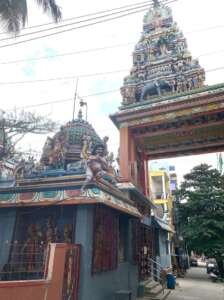 History: My grandfather was part of Tamil Sangam in 1980’s and when the Sangam was approached to build a temple providing the land to them , the team decided to build Sri Murugan Temple.
History: My grandfather was part of Tamil Sangam in 1980’s and when the Sangam was approached to build a temple providing the land to them , the team decided to build Sri Murugan Temple.
In the year 1990, June 24 , Sri Balamurugan Temple was inaugurated with a Garbagraha of 5 feet tall statue of Sri Balamurugan by Aadi Sinchingiri, Sri Sri Balagangadara Swamigal who did Pratisthapan.
In the year 1993, Sri Mahaganpati and Navagraha Statpitam was done in the presence of Sri Kripananda Variyar.
In the year 2000, June, in the presence of Kanchi Periya Swamigal, Sri Jayendra Saraswathi swamigal and Sri Vijayendra Saraswathi Sawmigal, the following deities pratisthapan was done: Sri Kannimoola Ganapathi, Sri Ayyappan, Sri Sathyanarayana, Sri Mahalakshmi, Sri Ekambareswarar, Sri Kamachi, Sri Saraswathi, Sri Vazhi Devayanai, Subramani Swamy .
Sri Ekambarishwarar swamy was brought from Kashi, under the Ganga river, its true divine to see the Linga.
Around the Garbhagudi, Sri Dakshinamurthy, Sri Mahavishnu, Sri Durga, Sri BhakthaAnjaneya, Sri Swarnakshara Bhairavar and Naga devathaigal are present.
June 2015, Rajagopuram Pooja was done by Kanchi Kamakoti Periyava Sri Sri Jayendra Saraswathi Swamigal and 5 day long grand ceremony was held in the temple premises.
Yearly: Thai poosam, Panguni uthiram, Temple Anniversary, Adi Kiruthigai, Maha Annabhishekam for Lord Shiva, Kantha Shashti, Sri Valli Devayani Subramanya Swamy thirukalyanam, Thiruvilakku poojai, Karthigai Deepam poojas have been followed for past 30 years.
Monthly: Kiruthigai, Shashti, Vishakam, Prathosham, Sathyanarayana pooja, Sankatakara Chathurthi pooja.
Weekly: Friday : Sri ChakraMahameru Lalitha Sahasranaamam Pooja performed every week with devotees.
All the poojas and festivals happening in temple premises year round with the blessing of Lord Balamurugan and donations from the devotees.
I am so happy to visit the temple during festivals and special pooja as I get to see my grandfather busy managing things around the temple and giving yummy prasadam to the devotees. And beautifully decorated Lord Balamurugam especially during Temple Anniversary is a blessing to see. I also like to recite Shlokha to each god present in the temple.
I am so proud of MY GRANDFATHER who is always in the temple managing things around. He is the main TRUSTEE in the temple. Thanks to my grandfather who helped me in writing the temple series for GURUKULAM -The Shloka Learning Centre
Temple Address:
New Thippasandra , HAL 3rd stage, Bengaluru-560075
Timings:
Everyday Morning : 6AM – 11AM & Evening : 5.30PM – 8.30PM
Special Pooja Timing : 6AM – 1PM and 5PM – 9PM
Written by Harshini,
Age – 8 Years
GURUKULAM – The Shloka Learning Centre
SHIRIDI – SAI BABA TEMPLE [MAHARASHTRA – INDIA]
Shirdi is located about 300 km from Mumbai and is best known for its shrine of the saint known as Sai Baba. The pilgrimage town welcomes thousands of devotees every day throughout the year. In the winters, devotees walk from various parts of the country to pay their respects to Sai Baba. His shrine, the Sai Baba Samadhi Mandir, lies at the heart of Shirdi’s economy. It is believed that Sai Baba arrived in Shirdi at the age of 16 and remained there till his death in 1918.
Having found shelter in Khandoba temple, Sai Baba met Mahalsapathi who was the first to address him by that name. A spiritual guru, Sai Baba believed that faith and compassion were the two most important attributes one must have to attain godliness. The Sai Baba Samadhi Mandir was built in 1922, four years after his death to continue carrying on his message. The temple was originally owned by a Nagpur millionaire, ShrimantGopalrao, who was a devotee of Sai Baba but is now owned by a trust that also manages the day-to-day affairs.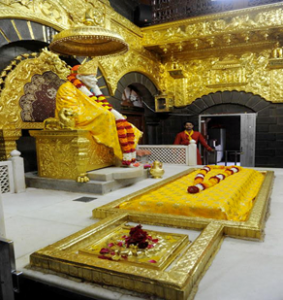
Made entirely of white marble, the hall of the temple can accommodate over 600 people. The temple is open to devotees from 5 am to 10 pm and there is literally no time of the day when the hall isn’t packed. By some estimates, Shirdi receives anywhere between 60,000 to 100,000 visitors a day. The temple is open overnight on special days — Gurupoornima, Dussehra and Ramnavami.
Shiridi Tourism
1. SHANI SHINGNAPUR
Shani the son of Sun (Surya) is famous God in Shinganapur. A specialty of Shinganapur is there are no doors to the houses. Shri Shani Dev protects people from thieves. Shanishinganapur is one more religious place in Ahmednagar-Nagar Dist. Rahuri is 50 Km. from Shirdi.
The village of Trimbak, 36 kms from Nashik, is famous for the Trimbakeshwar Temple and as the source of the Godavari River. Trimbakeshwar enshrines one of the 12 Jyotirlingas dedicated to Shiva and this one is considered to be the main Jyotirlinga.
Bhimashankar is the temple containing one of the five Jyotirlingas found in Pune Dist. Maharashtra. Nana Fadnis, an eminent statesman of the Peshawa days, constructed the beautiful Shiva Temple at Bhimashankar. The wooden entrance of the temple is beautifully carved.
4. ELLORA CAVES
 Dating back to the 2nd BC and artistically built over a few centuries, the Caves of Maharashtra have an extraordinary appeal and aura. Nestled in the formidable Sahayadri Mountain Range, these caves have been home to monks of different religions. Be it the paintings in the Ajanta caves or the sculpture of the Ellora caves, or the divine presence in the Elephanta caves, the visitors have always and will always continue to be spellbound.
Dating back to the 2nd BC and artistically built over a few centuries, the Caves of Maharashtra have an extraordinary appeal and aura. Nestled in the formidable Sahayadri Mountain Range, these caves have been home to monks of different religions. Be it the paintings in the Ajanta caves or the sculpture of the Ellora caves, or the divine presence in the Elephanta caves, the visitors have always and will always continue to be spellbound.
This temple was built in 1794 and is similar in its architectural design to the nearby Trimbakeshwar Temple. The temple is 70 feet in height and was the brainchild of GopikabaiPeshawa. It was built with black stone from the mines of Ramsej Hill.
Hope this information about SHIRDI was useful.
Thank you
Sai Lochan Ramanathan
Gurukulam The Shloka Learning Centre
Gokarna is a small temple town on the western coast of India in the Kumta taluk of Uttara Kannada district in Karnataka.
The main temple and deity is Shiva,who is also known as Mahabaleshwara. This temple houses the original Shiva’s linga i.e., the Atmalinga.
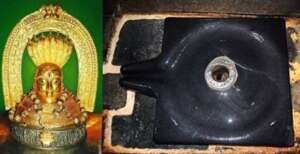
Image courtesy: Google Images
The temple is one of the seven sacred Muktikshetras or Muktisthala (“place of salvation”) in Karnataka. It is a place where many Hindus of Karnataka perform obsequies (death rites) for their departed.
Etymology
Gokarna means cow’s ear. It is believed that Shiva emerged from the ear of a cow on the Mother Earth here. It is at the ear-shaped confluence of two rivers Gangavali and Aghanashini.
As per Bhagavata Purana, a pious Brahmana named Atmaveda was unable to have any children because of karma incurred in past lives. Atmaveda met a Sanyasi, whom he implored to grant him and his wife the ability to have a child. The Sanyasi gave Atmaveda a fruit that his wife was to consume to have a child. Atmaveda’s wife Dhundhuli didn’t want to go through the pain of childbirth hence she gave the fruit from the Sanyasi to her cow. A human child was born of the cow; human in all its parts except for its ears, which were cow’s ears. Because of this the child was named Gokarna.
Legend
The earliest history of the city is in Treta Yuga. Ravana (Demon King of Lanka) reaches Kailasa and performs rigorous penance to get the “Atma Linga” from Shiva, as Ravana’s mother expresses a keen desire to worship the Atmalinga of Lord Shiva.
After a long penance, Shiva gives the Atma linga to Ravana as a boon and instructs Ravana to carry it home by walk and that he should never place it on the earth even for a short while, failing which the linga would get eternally embedded at the place where he broke his commands.
Maha Vishnu and the other gods learn about this and think Ravana will become all powerful by worshipping the ‘Atma Linga’ and will be a menace to the world.Hence Maha Vishnu devises a plan to install the linga somewhere andhe along with all the Gods plead Ganapati to execute the plan. Ganapati accepts and reaches Gokarna as a Brahmin boy.
As Ravana nears Gokarna, Maha Vishnu who knew well that Ravana was punctual in performing his periodical rites (Sandyavandhana), hides sun with his Sudarshana Chakra. Thinking that it was time to perform the evening rites, Ravana finds a Brahmin boy and asks him to hold the Atmalinga in his hand till he comes back after finishing the rites. Ganapati agrees to hold the linga on one condition that he would do so till he would be able to bear the weight of the linga and thereafter he would call Ravana three times and if he failed to come he would place the linga on the earth.
Ganapati calls Ravana three times when he was performing his rites and places the linga on the earth and vanishes. The Atmalinga at once gets firmly entrenched in the earth.
Ravana learnt that he had been tricked by the Gods. The depressed demon king Ravana was deeply agitated and tried to pull up the linga, but the linga did not budge a little. It resulted in he throwing the coverings of the Linga to Dhareshwara, Gunavanteshwara, Murudeshwara and Shejjeshwar temples. Ravana was unable to lift the linga from the ground and called the Shiva linga as Mahabala, one with great strength, and ever since, the linga in Gokarna is illustrious as Mahabaleshwara.
Shiva learnt all these from Vayu Deva – the god of wind, and came on the Earth with Goddess Parvathi and other Gods.He visited these five places and worshipped the linga which had now taken five forms. He acknowledged that these five places would be his “Pancha Kshetras” (Five Holy Places).
Gokarna Tourism
Apart from the pilgrimage aspect Gokarna is known for its idyllic beaches and pristine waters, it is a favourite destination among travellers who seek a peaceful vacation.
It is the more laid-back and less commercialized version of Goa. Other than the famous Om beach, it has Kudle beach and the more secluded Half Moon and Paradise beach.
list of other best places to visit near Gokarna within 300 kilometres – Mirjan Fort, Kumta, Yana, Karwar, Yellapur, Sirsi, Murdeshwar, Jog Falls, Dandeli and Goa.
Written By Ksheetish for Gurukulam The Shloka Learning Centre!!
TIRUCHENDUR TEMPLE
Tiruchendur Murugan temple is known as the second Arupadai Veedu of Lord Muruga. Lord Muruga won the battle with the asura, Surapadma and worshipped Lord Shiva in this sacred place. The temple is situated along the shores of the Bay of Bengal.
Normally, the RajaGopuram will be in the eastern side of temples in Tamil Nadu. But in Thiruchendur alone the RajaGopuram is in the western side. It is said that the Raja Gopuram was not erected on the eastern side since the sea is very close to the eastern side.
Mela Gopuram has nine storeys and it is about 137 feet high above Yalimattam, 90 feet long north to south and 65 feet broad east to west. At the top of the Gopuram the width is 20 feet and the length is 49 feet. To indicate that the Gopuram consists of 9 storeys there are nine Kalasams (sacred copper pots) at the top of the Gopuram.
Facts
- Tiruchendur is one of the six houses of Lord Muruga. It is located in Tuticorin district.
- The word Tiruchendur denotes the place of victory and prosperity since it points out Lord Muruga’s victory over Surapadma.
- Lord Muruga came to worship his father Lord Shiva after conquering Surapadma. Mayan, the architect of the Devas built the shrines in this temple.
- Raja Gopuram in this temple is situated in the western direction unlike in many temples where RajaGopuram is built in the eastern direction.
- Same way, unlike the other five temples which are built on the mountain region, Tiruchendur is situated on the sea shore.
- The temple was originally built of sandstone. Due to the weather at sea, it started to disintegrate. It was revamped by a sannyasin with the name Mauna Swami.
- The Panchalingams and sandstone cave dedicated to Valli in Tiruchendur temple are famous.
Best Time to Visit Thiruchendur
Winter (November to January) is the perfect time to visit Thiruchendur. This is the time when the famous Soorasamharam will be enacted in Thiruchendur. It is a must view event to get blessings of Lord Murugan and to see Thiruchendur in its complete glory.
Soorasamharam
Soora-samharam also known as Skanda ṣaṣṭhi or kanda sashti, is the most important festival dedicated to Lord Murugan. Kanda Sashti is observed mainly by Tamil Hindus. The day of Kanda Sashti is decided based on lunar month and it falls during sixth day of Karthikai Month (Karthikai Masam in Tamil).
During Kanda Sashti, devotees observe six days fasting which starts from first day or Pirathamai ( called prathamā in northern Hindu calendar ) of Aippasi lunar month and ends on the sixth day which is known as Soorasamharam day. Soorasamharam is the final and the most important day of the six days festivities. It is believed that Lord Murugan defeated Demon Surapadman on the very same day and the festival of Soorasamharam is observed every year to mark the victory of good over evil.
By : Tanishaa G
Ahobilam: Sri Lakshmi Narasimha Swamy Temple
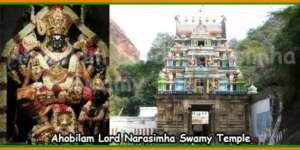 Ahobilam is a sacred place located in the Kurnool district of Andhra Pradesh, surrounded by magnificent hills of the Eastern Ghats range. It is here that Lord Vishnu incarnated as Lord Narasimha Swamy to kill the demon Hiranyakashipu and to save his beloved devotee Prahlada. The eastern ghats range is compared to Sri Adi Sesha, the serpent bed of Lord Vishnu. Ahobilam was the abode of demon king Hiranyakashipu who was killed by Lord Narasimha Swamy an incarnation of Lord Vishnu having a human body and lion head. Witnessing this divine act, the demigods praised Lord Narasimha as ‘Ahobala’ meaning ‘great strength.’ Ahobilam has another meaning as a wonderful cave referring to the cave in which Garuda meditated and received blessings of the Lord Narasimha Swamy. The mountain on which Garuda performed meditation was known as Garudachala, Garudadri and Garudashailam.
Ahobilam is a sacred place located in the Kurnool district of Andhra Pradesh, surrounded by magnificent hills of the Eastern Ghats range. It is here that Lord Vishnu incarnated as Lord Narasimha Swamy to kill the demon Hiranyakashipu and to save his beloved devotee Prahlada. The eastern ghats range is compared to Sri Adi Sesha, the serpent bed of Lord Vishnu. Ahobilam was the abode of demon king Hiranyakashipu who was killed by Lord Narasimha Swamy an incarnation of Lord Vishnu having a human body and lion head. Witnessing this divine act, the demigods praised Lord Narasimha as ‘Ahobala’ meaning ‘great strength.’ Ahobilam has another meaning as a wonderful cave referring to the cave in which Garuda meditated and received blessings of the Lord Narasimha Swamy. The mountain on which Garuda performed meditation was known as Garudachala, Garudadri and Garudashailam.
There are nine temples in the Ahobilam temple complex and hence called Nava Narasimha Temples. All the nine temples are enshrined with Seld Manifested deities of Lord Narasimha and can be broadly classified into two divisions: Upper Ahobilam or Eguva Ahobilam and Lower Ahobilam or Diguva Ahobilam.
Upper Ahobilam:
1. Ahobila Narasimha
This is the main and the oldest temple amongst the nine temples. The main deity is in the form of shaligrama with Ugra bhava. It is in Sukhasana posture tearing apart the chest of Hiranyakashipu.
Prahlada can also be seen in front the deity.
2. Krodha Narasimha
Krodha Narasimha also known as Varaha Narasimha is the main deity of the temple. The deity has the face of boar and is regarded as a very special form of Lord Narasimha Swamy
3. Malola Narasimha
Here the deity of Lord Narasimha is in peaceful form with Lakshmi Devi present near him. The word ‘Ma’ refers to Mother Lakshmi and ‘lola’ means beloved. Lord Narasimha is the beloved of Mother Lakshmi and hence he is worshipped as Malola Narasimha
4. Jwala Narasimha
The temple of Sri Jwala Narasimha is situated on a hill called Achalachaya Meru which is on the base of Ugra Stambha. This is the exact spot where Lord Narasimha killed Hiranyakashipu. Here the anger of Lord Narasimha reached its peak. The Deity of Lord Narasimha in this temple is seen tearing apart Hiranyakashipu with His powerful nails.
Lower Ahobilam:
5. Yogananda Narasimha
Here the Lord is seen as seated in padmasana posture with yogapatta around His legs. It is believed that Lord Narasimha after killing Hiranyakashipu taught Prahlada few yogic postures here.
6. Chatravatha Narasimha
Here the Lord is in a unique form having a very beautiful smile on His face. Since the Lord is worshipped under a peepal tree, surrounded by the thorny bushes, He is popular here by the name Chatravatha Narasimha.
7. Pavana Narasimha
This temple is situated on the bank of river Pavana and hence known as Pavana Narasimha. Here the Lord is in the most peaceful form amongst the nine Narasimha’s. Here the Lord is also known as Pamuleti Narasimha Swamy.
8. Bhargava Narasimha
Bhargava Narasimha is considered to be the most aggressive form of Lord Narasimha Swamy. Here the deity is seen holding a bow in one hand and Sudarshana Chakra in the other hand.
9. Karanja Narasimha
 Here the deity is installed under a tree, called ‘Karanja Vruksham’. Hence this Lord is called Karanja Narasimha Swamy. Other Places to Visit in Ahobilam include Ugra Stambha, Prahlada Mettu, Prahlada Varad Temple.
Here the deity is installed under a tree, called ‘Karanja Vruksham’. Hence this Lord is called Karanja Narasimha Swamy. Other Places to Visit in Ahobilam include Ugra Stambha, Prahlada Mettu, Prahlada Varad Temple.

